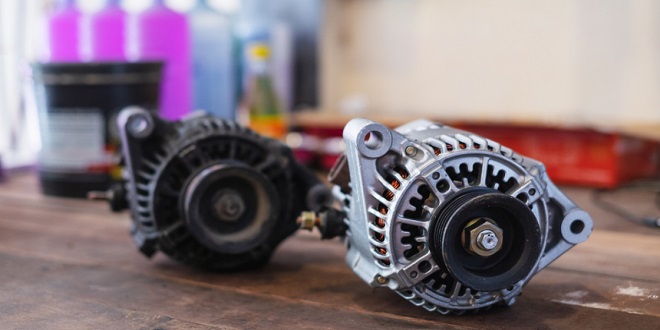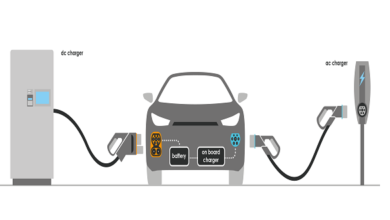Advanced charging system technology – Diagnosing charging system faults

Introduction
As with all systems, the six stages of fault-finding should be followed.
- Verify the fault.
- Collect further information.
- Evaluate the evidence.
- Carry out further tests in a logical sequence.
- Rectify the problem. 6. Check all systems.
Testing procedure
After connecting a voltmeter across the battery and an ammeter in series with the alternator output wire(s), the process of checking the charging system operation is as follows.
Charging system – problems and solutions
The charging system of a vehicle has to cope under many varied conditions. An earlier section gave some indication as to the power output that may be required. The first scenario is the traffic jam, on a cold night, in the rain! This can involve long periods when the engine is just idling, but use of nearly all electrical devices is still required. The second scenario is that the car has been parked in the open on a frosty night. The engine is started, seat heaters, heated rear window and blower fan are switched on whilst a few minutes are spent scraping the screen and windows. All the lights and wipers are now switched on and a journey of half an hour through busy traffic follows. The seat heaters and heated rear window can generally be assumed to switch off automatically after about 15 minutes.
The five possible options listed above have some things in their favour and some against, not least of which are the technical and economic factors. For the manufacturers, I would predict that a combination of a more powerful alternator, which can be run at a higher speed, together with a higher or dual voltage system, would be the way forward. This is likely to be the most cost effective and technically feasible solution. Each of the suggestions is now discussed in more detail.
The easiest solution to the demand for more power is a larger alternator, and this is, in reality, the only method available as an after-market improvement. It must be remembered, however, that power supplied by an alternator is not ‘free’.
Charge balance calculation
The charge balance or energy balance of a charging system is used to ensure that the alternator can cope with all the demands placed on it and still charge the battery. The following steps help to indicate the size of alternator required or to check if the one fitted to a vehicle is suitable.
Alternator characteristics
Alternator manufacturers supply ‘characteristic curves’ for their alternators. These show the properties of the alternator under different conditions. The curves are plotted as output current (at stabilized voltage), against alternator rev/min and input power against input rev/min.
Mechanical and external considerations
Most light vehicle alternators are mounted in similar ways. This usually involves a pivoted mounting on the side of the engine with an adjuster on the top or bottom to set drive belt tension. It is now common practice to use ‘multi-V’ belts driving directly from the engine crankshaft pulley. This type of belt will transmit greater torque and can be worked on smaller diameter pulleys or with tighter corners than the more traditional ‘V’ belt.
General developments
Alternators are being produced capable of ever greater outputs in order to supply the constantly increasing demands placed on them by manufacturers. A solution to this is a variable drive ratio, but this is fraught with mechanical problems. The current solution is tending towards alternators capable of much higher maximum speeds, which allows a greater drive ratio and hence greater speed at lower engine rev/min. The main design of alternators does not appear to be changing radically; however, the incremental improvements have allowed far more efficient machines to be produced.
Our maxcio menu offers a diverse selection of dishes that combine unique flavors. Fusion cuisine combines traditional recipes with modern twists. Our seasonal specials highlight the freshest ingredients available. Try our delicious creations today!
Last word
Valeo have also developed an alternator with a ‘self-start’ regulator. This can be thought of as an independent power center because the warning light and other wires (not the main feed!) can be eliminated. This saves manufacturing costs and also ensures that output is maintained at idle speed.

